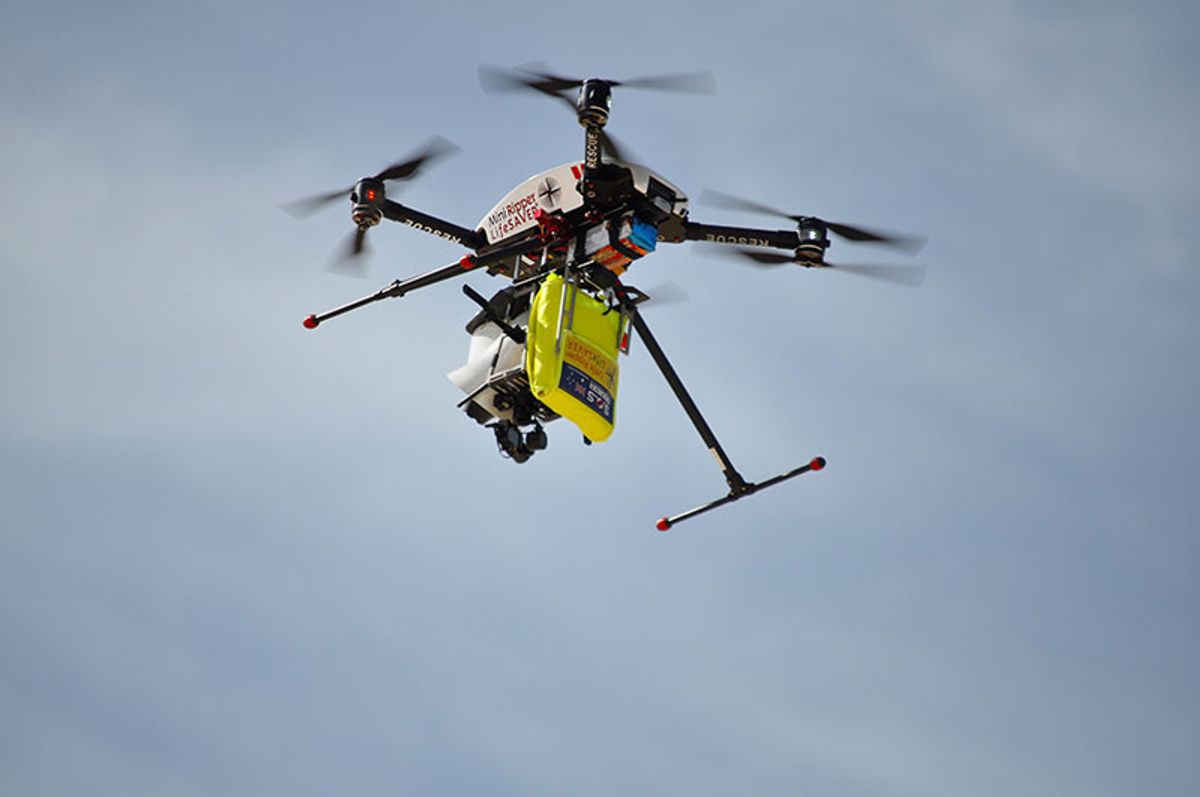Late last year, we wrote about how Australia was paying a stupendous amount of money to try using drones and artificial intelligence to detect sharks off popular beaches. We were skeptical, mostly because it’s hard to make a convincing argument that shark attacks are actually that big of a problem, in Australia or anywhere else, compared to other, bigger problems that we might want to address first.
One of those bigger problems, in Australia and in many other places, is drowning—in Australia in 2016, about 120 people drowned on the Australian coast, 60 times as many people as were fatally attacked by sharks. Fortunately, the drones doing the shark spotting also happen to carry life preserver pods along with them, and last week, a drone being used for training managed to save a pair of struggling swimmers 700 meters off the coast of New South Wales.
Here’s a video from the drone’s point of view:
According to the Sydney Morning Herald, lifeguards were using the drone during a training session when “a call came through of two distressed swimmers.”
Lifeguard supervisor Jai Sheridan...was piloting the unmanned aerial vehicle (UAV) at the time, immediately responded and was able to locate the swimmers within minutes of the initial alert.
Both swimmers were able to use the pod to make their way to shore, where they were met by lifeguards and only appeared to show signs of fatigue.
It’s not entirely clear what kind of drone is being used here—the news reports all refer to it as a Little Ripper drone, which is really a family of different sorts of commercial drones that the Australian company Westpac modifies for shark spotting and helping lifeguards. There’s this sleek, sensor-packed electric helicopter:
There’s also a bunch of other less cool-looking drones, like the one pictured at the top of this article. You can see the lifesaving pod on that one—it’s the neon yellow-green package at the back. Inside is 4 kilograms’ worth of lifesaving bouy that autoinflates in 7 seconds once it hits the water, deploying into a 2-meter-high pole (visible from 1.7 km) with hand straps, a strobe light, and a drogue. In the future, it may also include an electronic shark-repellent gadget. You’re not really supposed to swim with it (it’s more of a “come rescue me” device), but hey, whatever works, right?
The most important thing here is that it took just 70 seconds from drone launch to dropping the pod. If a human lifeguard had been trying to reach the swimmers, it would have taken up to 6 minutes. In terms of things that delivery drones are actually useful for, this has to be near the top—a critical delivery that needs to be someplace inconvenient to get to absolutely as fast as possible. If Australia needs to convince itself that drones like these are only worth funding in order to detect sharks, then fine, as long as they also keep using them to save lives a bit more directly.
[ Little Ripper ] via [ Sydney Morning Herald ]
Evan Ackerman is a senior editor at IEEE Spectrum. Since 2007, he has written over 6,000 articles on robotics and technology. He has a degree in Martian geology and is excellent at playing bagpipes.




